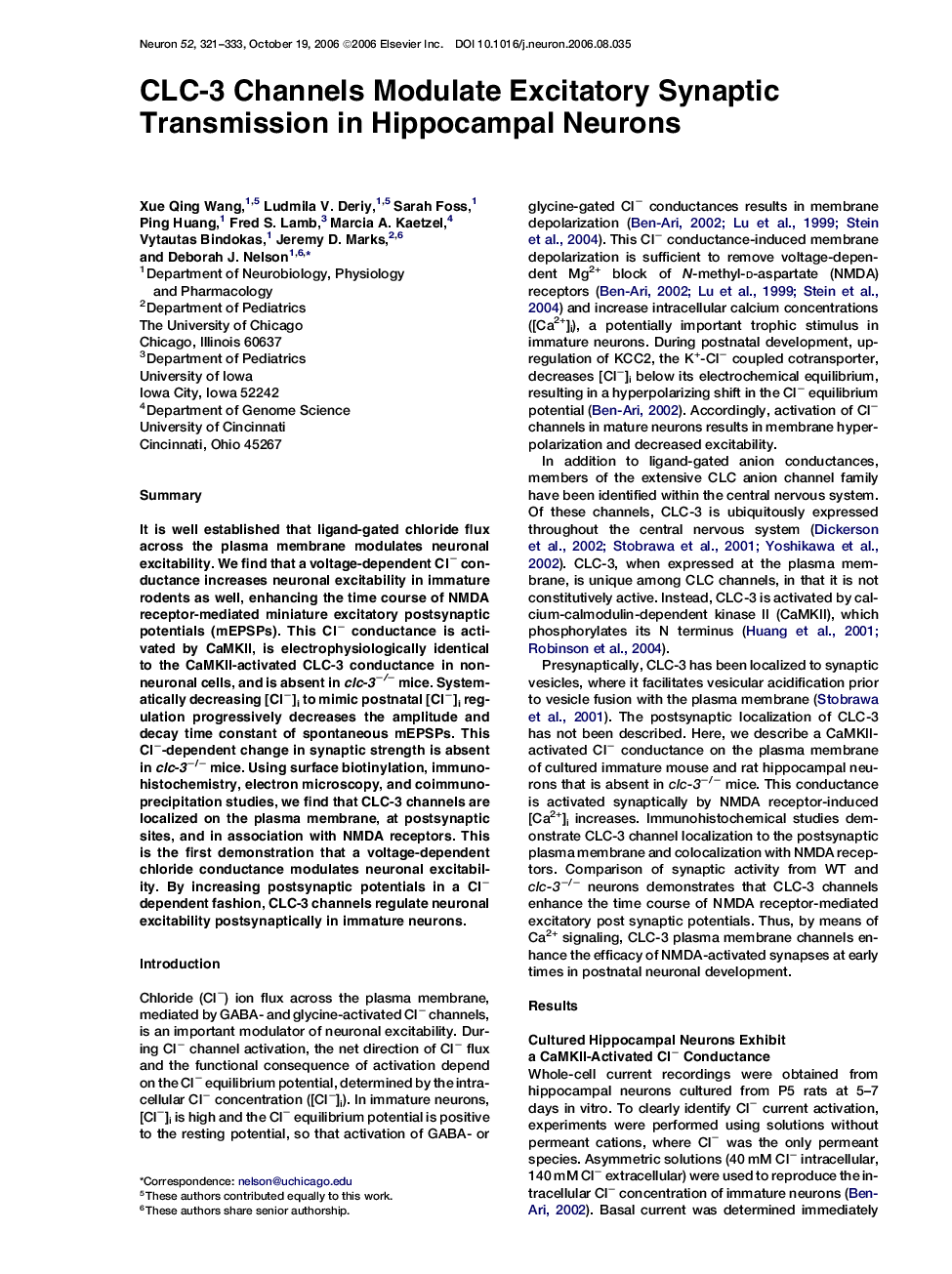| Article ID | Journal | Published Year | Pages | File Type |
|---|---|---|---|---|
| 4322887 | Neuron | 2006 | 13 Pages |
SummaryIt is well established that ligand-gated chloride flux across the plasma membrane modulates neuronal excitability. We find that a voltage-dependent Cl− conductance increases neuronal excitability in immature rodents as well, enhancing the time course of NMDA receptor-mediated miniature excitatory postsynaptic potentials (mEPSPs). This Cl− conductance is activated by CaMKII, is electrophysiologically identical to the CaMKII-activated CLC-3 conductance in nonneuronal cells, and is absent in clc-3−/− mice. Systematically decreasing [Cl−]i to mimic postnatal [Cl−]i regulation progressively decreases the amplitude and decay time constant of spontaneous mEPSPs. This Cl−-dependent change in synaptic strength is absent in clc-3−/− mice. Using surface biotinylation, immunohistochemistry, electron microscopy, and coimmunoprecipitation studies, we find that CLC-3 channels are localized on the plasma membrane, at postsynaptic sites, and in association with NMDA receptors. This is the first demonstration that a voltage-dependent chloride conductance modulates neuronal excitability. By increasing postsynaptic potentials in a Cl− dependent fashion, CLC-3 channels regulate neuronal excitability postsynaptically in immature neurons.
